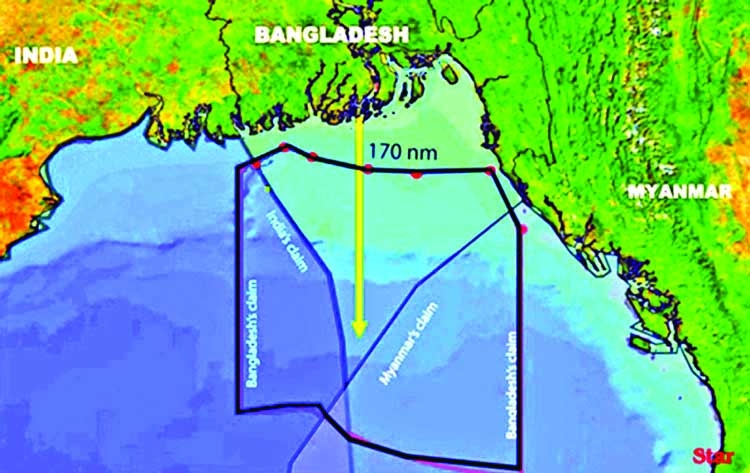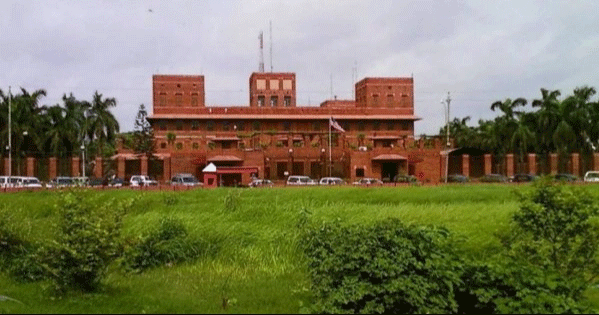Potentials of Blue Economy in Bangladesh
Rear Admiral M. Khurshed Alam
Energy
In 2009 offshore fields accounted for 32% of worldwide crude oil production and this is projected to rise to 34% in 2025 and higher subsequently, as almost half the remaining recoverable conventional oil is estimated to be in offshore fields – a quarter of that in deep water. Deep water oil drilling is not new, but market pressures are making the exploration for and tapping of evermore remote reserves cost effective, bringing the most isolated areas under consideration. Methane hydrates, a potentially enormous source of hydrocarbons, are now also being explored and tapped from the seabed.
Oil will remain the dominant energy source for many decades to come but the Ocean offers enormous potential for the generation of renewable energy – wind, wave, tidal, biomass, thermal conversion and salinity gradients. Of these the offshore wind energy industry is the most developed of the ocean-based energy sources.
Global installed capacity was only a little over 6 GW in 2012 but this is set to quadruple by 2014 and relatively conservative estimates suggest this could grow to 175 GW by 2035. Biotechnology- The global market for marine biotechnology products and processes is currently estimated at US $ 2.8 billion and projected to grow to around $ 4.6 billion by 2017.
Marine biotech has the potential to address a suite of global challenges such as sustainable food supplies, human health, energy security and environmental remediation. Marine bacteria are a rich source of potential drugs. In 2011 there were over 36 marine derived drugs in clinical development, including 15 for the treatment of cancer. One area where marine biotech may make a critical contribution is the development of new antibiotics.
The potential scope is enormous, by 2006 more than 14,000 novel chemicals had been identified by marine bio-prospecting and 300 patents registered on marine natural products.The unexplored and understudied nature of much of the underwater world means that the capacity of marine organisms other than fish and shellfish to provide inputs to the blue economy is only just beginning to be appreciated, partly through new gene sequencing technologies for living organisms. There have already been successes. The anti-viral drugs Zovirax and Acyclovir were obtained from nucleosides isolated from Caribbean sponges. Yondelis, developed from small soft-bodied marine animals was the first drug of marine origin to fight cancer. In the very short term, the sector is expected to emerge as a niche market focused on high-value products for the health, cosmetic and industrial biomaterials sectors.
By 2023, it could grow as a medium-sized market, expanding towards the production of metabolites and primary compounds (lipids, sugars, polymers, proteins) as inputs for the food, feed and chemical industries. In a third stage, around 20 years from now and subject to technological breakthroughs, the blue biotechnology sector could become a provider of mass-market products, together with a range of high added value specialized products.
Accelerating this process will require a combination of basic research on ocean life and applied research on possible industrial applications with low probabilities but high rewards for success. Submarine mining-The world is gearing up for the exploration and exploitation of mineral deposits on and beneath the sea floor. Industry, due to rising commodity prices, is turning its attention to the potential riches of polymetallic nodules, cobalt crusts and massive sulphide deposits; the latter a source of rare earth elements, such as yttrium, dysprosium and terbium, important in new ICT hardware and renewable energy technologies. Commercial interest is particularly strong in polymetallic nodules and in seafloor massive sulphides.
The International Seabed Authority has developed the Mining Code regulations to meet these changing circumstances and has commenced issuing licenses for the exploration of the international sea floor. Coastal countries need to prepare themselves to ensure they realise optimal benefits from resources in their own EEZs and likewise that their concerns are incorporated into the measures to manage the coming race for the riches of the seabed.
The exploitation and mining of minerals, other than sand and gravel, from the sea have just started. By 2023, 5% of the world’s minerals, including cobalt, copper and zinc could come from the ocean floors. This could rise to 10% by 2030. Global annual turnover of marine mineral mining can be expected to grow from virtually nothing to €5 billion in the next 10 years and up to €10 billion by 2030. It may also become economically feasible to extract dissolved minerals, such as boron or lithium, from seawater. The most promising deposits are found in metallic sulphides which emerge from hydrothermal ore deposits (such as black smokers) in volcanically active zones. The temperatures and pressures in these regions are extreme and the impact of disturbance on these hot spots of marine biodiversity, which under the UN Convention on the Law of the Sea (UNCLOS) should be protected, is largely unknown.
However, there are opportunities outside jurisdictional marine areas. In these areas, the International Seabed Authority (ISA) is responsible for organizing and controlling activities, including monitoring all mineral-related activities. Their continued competitiveness depends on access to finance in an inherently risky market, targeted research and development in extraction techniques, the ability to obtain licences in international waters and robust measures to avoid harming unique ecosystems. Governance – Each sovereign country is responsible for its own resources and sustainable development.
Whether it be with regard to updating and advancing governance mechanisms to ensure the sustainable development of waters beyond national jurisdiction (e.g. maritime security, high seas MPAs, sustainable fisheries, oil and mineral extraction) or assistance in enabling the effective management and utilization of national EEZs (e.g. technology transfer, technical assistance, marine spatial planning), capacity building, finance to support national marine spatial planning and effective monitoring, control and surveillance). A key component of international cooperation for the Blue Economy approach is Research.
A science-based approach is essential to the development of the Blue Economy; commencing with the initial assessment and critically the valuation of the blue capital at our disposal. This will provide a basis for informed decision-making and adaptive management. This major undertaking must be addressed and continually refined and upgraded in line with changing circumstances, evolving technologies and our increasing understanding; or the Blue Economy approach will founder.
This underlines the importance of technical assistance, technology transfer and capacity building to the pursuit of sustainable development. Charting a new course for Bangladesh with the resources of the BlueSea.
The objective of the blue economy initiative – the maritime pillar of the future strategy – is to promote smart, sustainable and inclusive growth and employment opportunities in Bangladesh’s maritime economic activities in the short, medium and longterm time frames.
The Blue economy initiative specifically aims to promote synergies and foster framework conditions that support specific maritime economic activities and their value chains. The extensive review and analysis of Blue Growth potential has confirmed the potential of the Blue Economy as an untapped resource. To realize the necessary international cooperation and support to elevate the Blue Economy to the international sustainable development agenda, Bangladesh amongst the coastal countries has targeted the preparatory process leading up to the first International Workshop on Blue Economy in Sep 1-2, 2014 in Dhaka.
Full development and endorsement of the proposal by the government would constitute the next step in securing international momentum for, and acceptance of, the Blue Economy as an approach distinct from, but mutually supportive with, the general economy. Prime Minister during the workshop emphasized that that Blue Economy could play an important role in the economic upliftment of the country in the context of poverty alleviation, ensuring food and nutrition security, combating climate change impacts. (To be continued)
Rear Admiral M. Khurshed Alam, Secretary, MAU, Ministry of Foreign Affairs, Bangladesh
President Joe Biden tests positive for COVID-19 while campaigning in Las Vegas, has ‘mild symptoms’
International Desk: President Joe Biden tested positive for COVID-19 while traveling Wedne…








